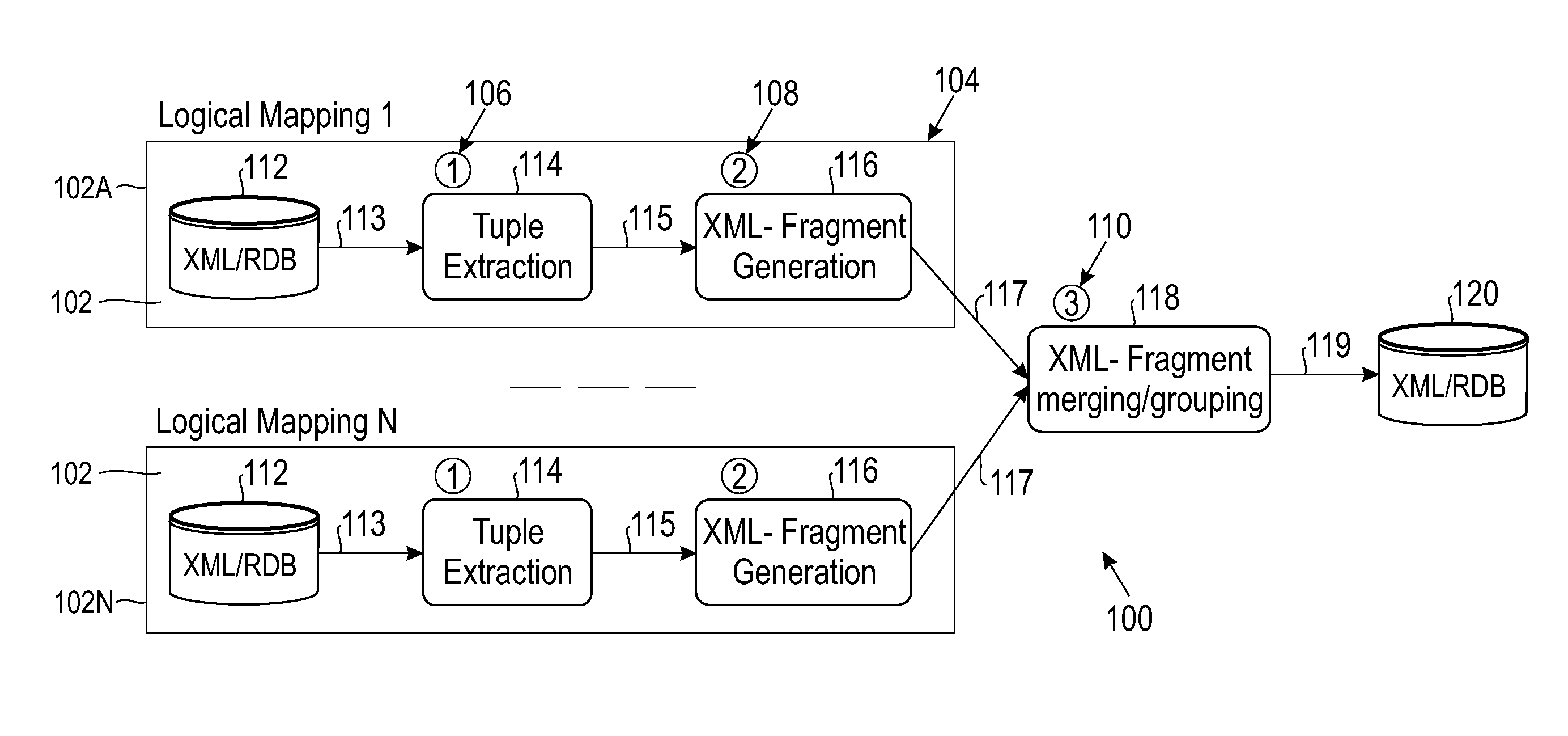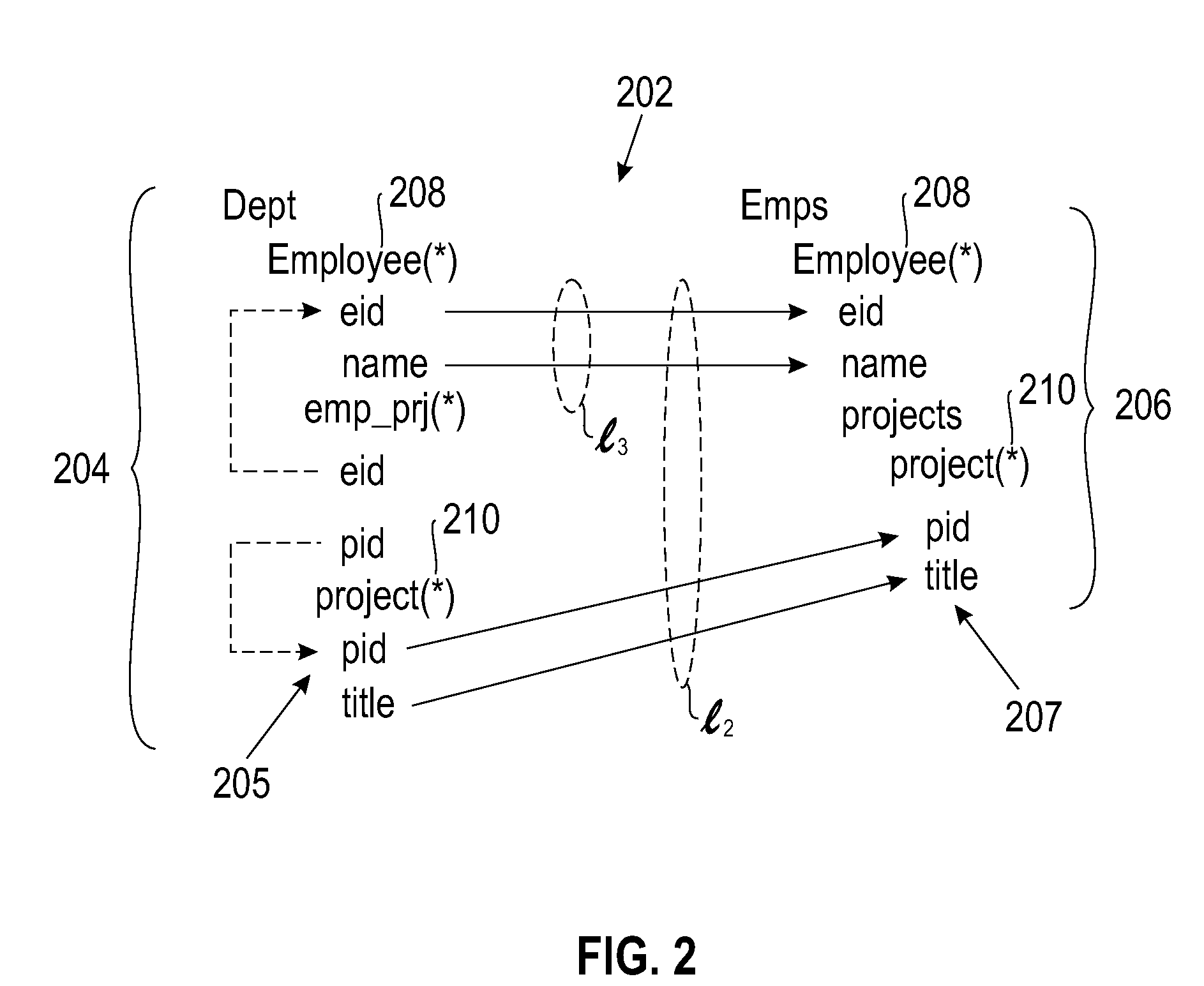Scalable algorithms for mapping-based XML transformation
a mapping-based, scalable technology, applied in the field of data transformation and integration, can solve the problems of large programs (queries) that are difficult to comprehend, involve similar problems, and are often time-consuming and error-pron
- Summary
- Abstract
- Description
- Claims
- Application Information
AI Technical Summary
Benefits of technology
Problems solved by technology
Method used
Image
Examples
Embodiment Construction
[0019]The following detailed description is of the best currently contemplated modes of carrying out the invention. The description is not to be taken in a limiting sense, but is made merely for the purpose of illustrating the general principles of the invention, since the scope of the invention is best defined by the appended claims.
[0020]Broadly, embodiments of the present invention provide XML-to-XML transformation for mapping tools—such as, but not limited to, the Clio system—and provide systems for scalable XML transformation based on schema mappings. In one embodiment of the present invention, a mapping-based XML transformation system takes source XML documents together with a high-level mapping specification as input and generates target XML documents based on the schema mapping.
[0021]The XML transformation system of the present invention may be “scalable” in the sense that the system is adaptable to inputs with large data size—achieving scalability for example, by dynamicall...
PUM
 Login to View More
Login to View More Abstract
Description
Claims
Application Information
 Login to View More
Login to View More - R&D
- Intellectual Property
- Life Sciences
- Materials
- Tech Scout
- Unparalleled Data Quality
- Higher Quality Content
- 60% Fewer Hallucinations
Browse by: Latest US Patents, China's latest patents, Technical Efficacy Thesaurus, Application Domain, Technology Topic, Popular Technical Reports.
© 2025 PatSnap. All rights reserved.Legal|Privacy policy|Modern Slavery Act Transparency Statement|Sitemap|About US| Contact US: help@patsnap.com



